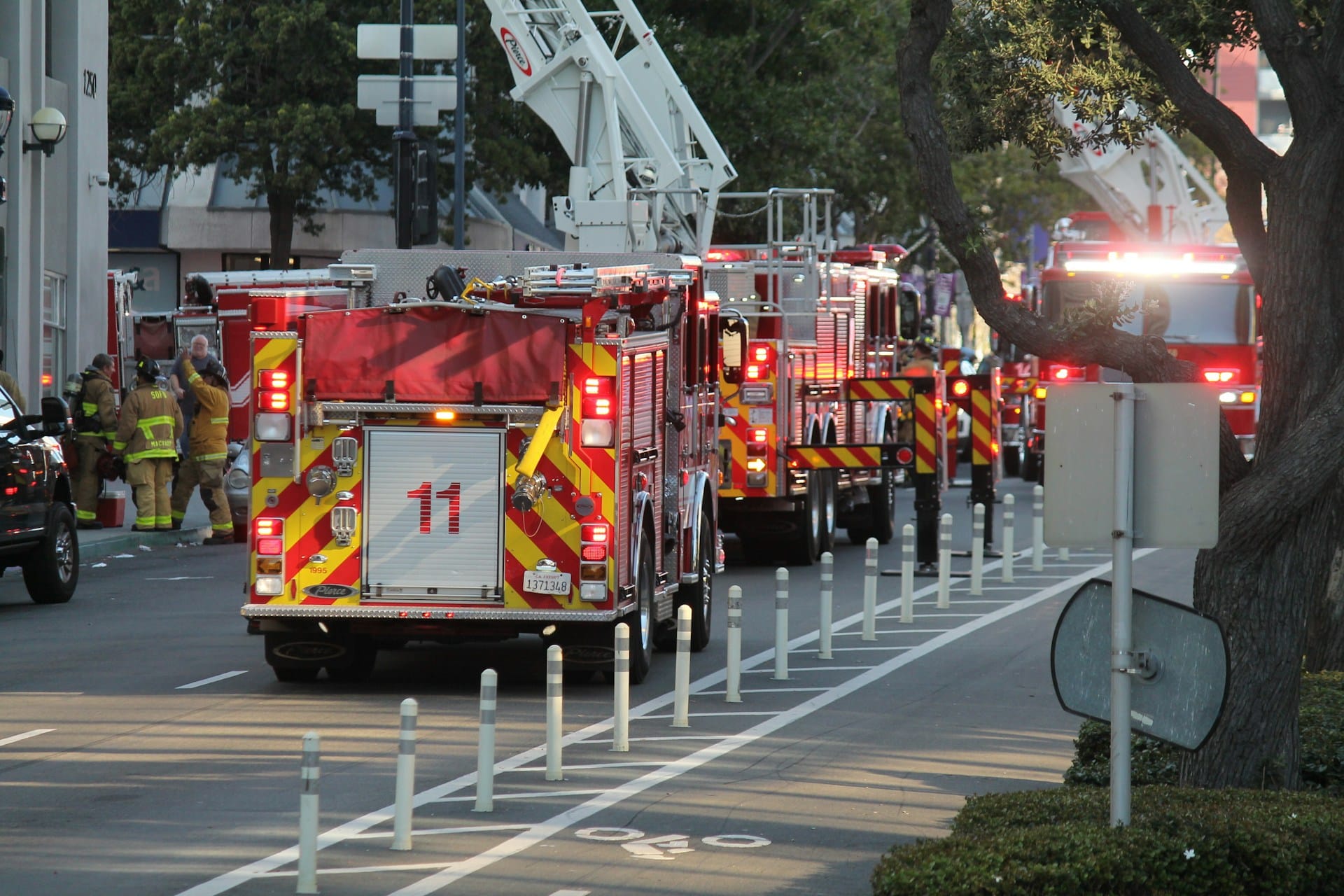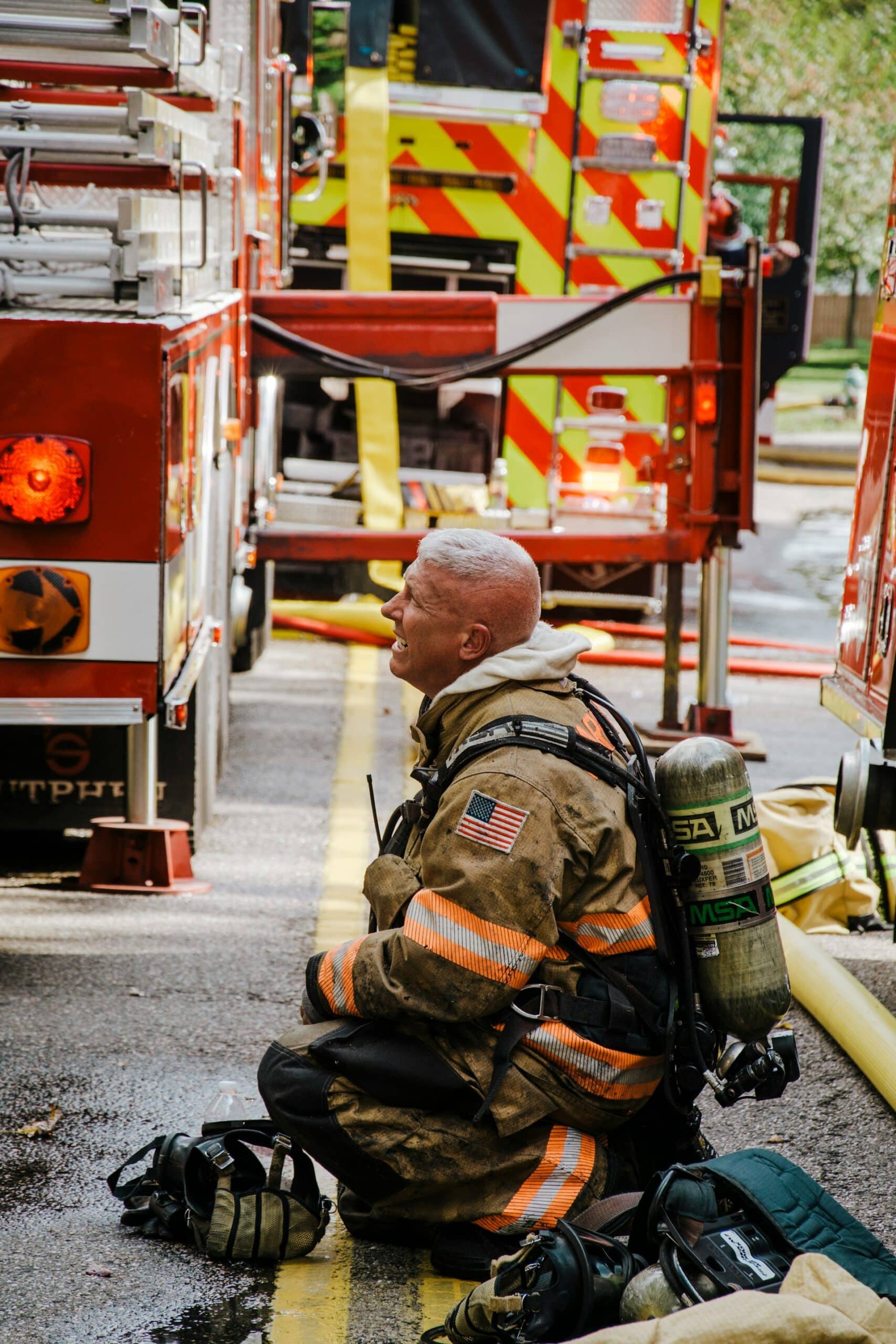Firefighting has long relied on Aqueous Film Forming Foam (AFFF) for its remarkable effectiveness in extinguishing flammable liquid fires. However, recent studies have raised significant concerns about the environmental and health impacts of AFFF, leading to a growing demand for safer alternatives.
As awareness of these issues increases, those affected increasingly seek help for an AFFF firefighting foam lawsuit, highlighting the urgency for change. This article explores four innovative alternatives to AFFF, each offering unique benefits while addressing the critical need for environmental safety and health protection.
IMAGE: UNSPLASH
Fluorine-Free Fire Fighting Foam
Fluorine-Free Fire Fighting Foam, often called F3, represents a significant advancement in firefighting technology. Unlike traditional AFFF, which contains fluorinated chemicals, F3 foams are formulated without fluorine compounds.
This fundamental difference lies in their composition, which typically includes water, organic solvents, and surfactants. These ingredients work together to create a foam that can effectively smother fires, cutting off the oxygen supply and suppressing the flames.
Advantages Over AFFF
- Environmental Benefits: One of the most compelling advantages of F3 is its reduced environmental impact. The absence of fluorine, a persistent and potentially harmful chemical, means that F3 does not pose the same risk of contaminating soil and water sources. This makes it a much more eco-friendly option, aligning with the growing global emphasis on environmental conservation.
- Safety for Health: Besides its environmental benefits, F3 is also considered safer for human health. Traditional AFFF has been linked to various health issues due to its fluorinated compounds, which can accumulate in the human body over time. F3, being fluorine-free, reduces the risk of such health concerns, offering a safer alternative for firefighters and the communities they protect.
Applications And Effectiveness
F3 has proven effective in various fire scenarios, particularly those involving flammable liquids like gasoline and oils. Its ability to rapidly form a blanket over the fire, cutting off the fuel source from oxygen, makes it an excellent choice for industrial, aviation, and military applications.
Safespill
Safespill technology presents a groundbreaking approach to fire suppression, focusing on immediately removing liquid fuel sources from the fire area. This system consists of specialized flooring that quickly drains flammable liquids away, preventing the fire from spreading.
Unlike traditional foams, Safespill operates mechanically, offering a unique solution in firefighting.
Comparison With AFFF In Terms Of Environmental Impact
Compared to AFFF, Safespill significantly reduces environmental risks. Since it doesn’t rely on chemical agents, there’s no risk of harmful substances contaminating soil or water. This makes Safespill a more eco-friendly alternative that aligns with environmental safety standards.
Effectiveness In Various Fire Scenarios
Safespill is particularly effective in scenarios involving spills of flammable liquids, such as in aviation hangars or fuel storage facilities. Swiftly removing the fuel source minimizes the fire’s spread and intensity. While it may not be suitable for all types of fires, its effectiveness in specific scenarios makes it a valuable tool in modern firefighting strategies.
While it may not always match the speed of AFFF in extinguishing fires, its safety and environmental benefits make it a compelling alternative, especially in situations where the environmental impact is a significant concern.
Dry Chemical Agents
Dry chemical agents are powdery substances used in fire extinguishers to suppress fires. These agents, typically comprising sodium bicarbonate, potassium bicarbonate, or monoammonium phosphate, work by interrupting the chemical reaction of a fire. When deployed, they create a barrier between the fuel and oxygen, effectively smothering the flames.
How Dry Chemical Agents Differ From AFFF
Unlike AFFF, which forms a foam blanket to cut off a fire’s oxygen supply, dry chemical agents work by directly interfering with the fire’s chemical process. While AFFF is primarily used for liquid fires, dry chemical agents are versatile and suitable for various fire types, including electrical and grease fires.
Types Of Fires Best Suited For Dry Chemical Agents
Dry chemical agents are particularly effective against Class B fires (flammable liquids and gases) and Class C fires (electrical fires). They are also used for Class A fires (ordinary combustibles like wood and paper), especially when combined with monoammonium phosphate. Their versatility makes them a staple in many commercial and residential fire extinguishers.
Advantages And Limitations
The primary advantage of dry chemical agents is their broad applicability across different fire classes. They are fast-acting, easy to use, and leave a non-conductive residue, making them ideal for electrical fires.
However, their limitations include the potential for corrosive damage, especially to sensitive electronic equipment, and the mess created by the powder, which can be challenging to clean up. They are also less effective on large-scale liquid fires than AFFF or its alternatives.
Hi-Ex Foam
High-Expansion (Hi-Ex) Foam is a type of firefighting foam that expands significantly when applied, creating a large, fluffy blanket of foam. It’s produced by mixing a foam concentrate with water and air, producing a foam that can expand up to 1000 times its original volume. This high expansion ratio allows it to cover large areas quickly, effectively smothering fires by depriving them of oxygen.
Comparison Of Hi-Ex Foam With AFFF
While AFFF is known for its rapid-fire suppression capabilities, particularly with flammable liquid fires, Hi-Ex Foam excels in situations requiring significant volume coverage. AFFF forms a thin, water-based film that suppresses vapors and cools the fire, whereas Hi-Ex Foam creates a thick, insulating blanket, making it more suitable for different types of fire scenarios.
Suitable Applications For Hi-Ex Foam
Hi-Ex Foam is particularly effective in enclosed spaces such as warehouses, ship holds, and basements, where its expansive nature can quickly fill the area and smother fires. It’s also used in aircraft hangars and for spill fires, where its volume can cover large areas rapidly.
Benefits And Potential Drawbacks
Benefits
- Covers large areas quickly, making it ideal for voluminous spaces.
- Effective in smothering fires in enclosed environments.
- Requires less water than other foams, reducing water damage.
Potential Drawbacks
- It is not as effective on open-air or fast-spreading liquid fires as AFFF.
- Requires specialized equipment to generate and apply.
- The large foam volume can be difficult to manage and clean up post-firefighting.
- Limited effectiveness on fires involving deep-seated heat sources.
Final Word
As we’ve explored, the quest for alternatives to Aqueous Film Forming Foam (AFFF) is a matter of advancing firefighting technology and a crucial step towards environmental and health safety.
From the eco-friendly and health-conscious Fluorine-Free Foam to the innovative Safespill technology, the diverse Dry Chemical Agents, and the expansive Hi-Ex Foam, each alternative offers unique benefits and applications.
Looking ahead, the future of firefighting foams and technologies appears promising, with a clear trend towards solutions that are effective, environmentally responsible, and safe for health.
IMAGE: UNSPLASH
If you are interested in even more technology-related articles and information from us here at Bit Rebels, then we have a lot to choose from.


COMMENTS